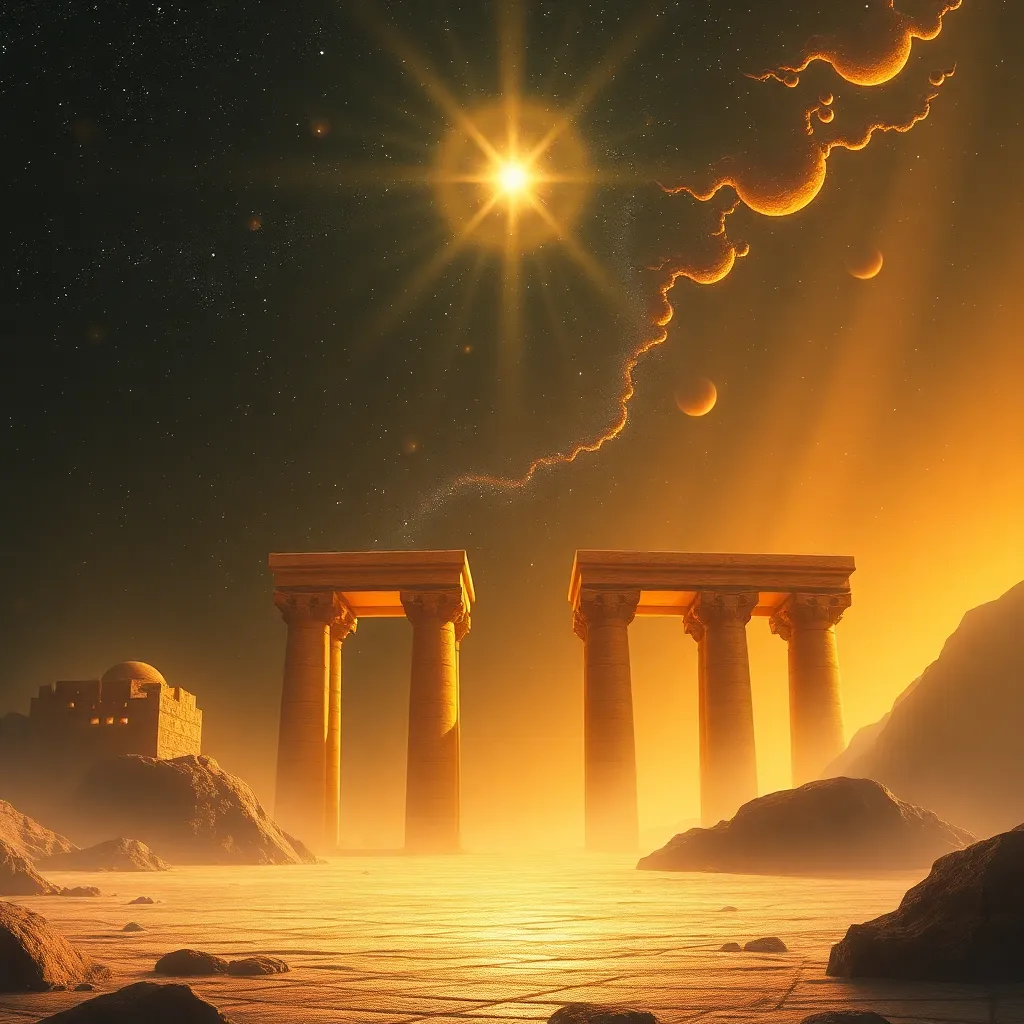The Myth of the Celestial Light: The Dawn of the Gods
I. Introduction
The concept of celestial light has fascinated humanity since ancient times, embodying the essence of creation, divinity, and enlightenment. In mythology, light is often depicted as a powerful force that transcends the mundane, representing purity, knowledge, and the divine connection between gods and humans.
Throughout various cultures, gods play a central role in shaping the world and its narratives. These deities often embody aspects of nature and human experience, providing insight into the values and beliefs of the societies that worship them. This article aims to explore the myth of celestial light, examining its implications and significance within the broader context of mythological tradition.
II. Historical Context of Celestial Light in Mythology
Ancient civilizations have long revered celestial phenomena, interpreting them through the lens of their cultural beliefs. The sun, moon, and stars have served as symbols of divine power and guidance, providing a framework for understanding the universe.
In many mythological narratives, light is a divine symbol that signifies creation, order, and life. It often contrasts with darkness, which represents chaos and ignorance. Here are some key examples from different cultures:
- Greek Mythology: The Greek god Helios embodies the sun, illuminating the world and driving away the darkness of night.
- Egyptian Mythology: Ra, the sun god, is a central figure associated with creation and the cycle of life, symbolizing celestial light’s power.
- Hindu Mythology: The deity Surya represents the sun, often depicted riding a chariot across the sky, bringing light and warmth to the earth.
III. The Symbolism of Light in Creation Myths
Light plays a pivotal role in many creation myths, often associated with the emergence of order from chaos. These narratives frequently depict the act of creation as a process initiated by light, illuminating the darkness and giving birth to the universe.
For instance, in the Egyptian creation myth, the god Atum generates light when he emerges from the primordial waters of Nun, creating the world through the power of his divine will. This association between light and the birth of gods is prevalent across various cultures.
Comparative studies reveal that light symbolism resonates universally:
- In the Judeo-Christian tradition, God creates light on the first day, separating it from darkness.
- In Norse mythology, the light of the Aesir gods represents order, countering the chaos of the giants.
- The Maori creation myth speaks of the duality of light and darkness, where light is a source of life and knowledge.
IV. Deities of Light: Archetypal Figures in Myth
Throughout history, numerous deities have been associated with celestial light, serving as archetypal figures that embody its qualities. These gods often represent aspects of enlightenment, guidance, and purity.
Key deities include:
- Ra: The Egyptian sun god, revered as the creator of the world and a symbol of life and growth.
- Helios: The Greek sun god, who drives the sun across the sky, illuminating the earth and representing the passage of time.
- Surya: The Hindu sun deity, considered a source of health and prosperity, worshipped for his life-giving rays.
The stories of these deities have significantly impacted cultural identity and spirituality, shaping rituals, art, and literature throughout the ages.
V. The Duality of Light and Darkness
In mythology, the interplay between light and darkness often represents a balance of opposing forces. This duality is a recurring theme, highlighting the conflict and harmony between gods of light and those associated with chaos.
For instance, in Egyptian mythology, the sun god Ra battles the serpent Apep, a symbol of chaos and darkness, every night. This eternal struggle reflects the struggle between order and chaos that underpins existence.
Lessons derived from this interplay include:
- The importance of balance in the natural world.
- The necessity of facing one’s fears and inner darkness to achieve enlightenment.
- The understanding that light cannot exist without darkness, and vice versa.
VI. The Celestial Light in Modern Interpretations
In contemporary culture, the myth of celestial light remains relevant, influencing various aspects of art, literature, and philosophy. Modern interpretations often draw on ancient themes, exploring the significance of light as a metaphor for knowledge, truth, and enlightenment.
Examples of this influence can be seen in:
- Literature, where authors frequently use light as a symbol of hope and understanding.
- Art, where light and shadow are employed to convey emotions and ideas.
- Media, where movies and television often depict the battle between good (light) and evil (darkness).
The relevance of these myths in today’s discussions on spirituality and philosophy continues to inspire individuals seeking meaning in their lives.
VII. Debunking the Myth: Scientific Perspectives
While ancient myths provide rich narratives, scientific advancements have offered explanations for celestial phenomena previously attributed to divine forces. The transition from mythological explanations to scientific understanding has transformed our perception of the cosmos.
Scientific perspectives on light include:
- Understanding light as electromagnetic radiation, with properties that can be measured and studied.
- Exploring celestial phenomena such as stars and galaxies through astrophysics, revealing the vastness and complexity of the universe.
- Recognizing the human fascination with light as a reflection of our quest for knowledge and understanding of our existence.
VIII. Conclusion
In summary, the myth of celestial light serves as a powerful narrative that transcends cultures and time. It encapsulates humanity’s quest for understanding the divine, the natural world, and our place within it. This enduring legacy reflects the intersection of myth, culture, and human experience.
As we continue to explore the mysteries of light and darkness, we are reminded of the profound impact these ancient myths have on our spiritual and philosophical discussions today. The celestial light, once attributed to the gods, now shines through our collective consciousness, illuminating our path forward.




